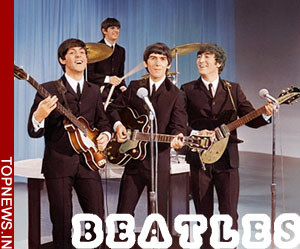Yeah, yeah, yeah - trace the footsteps of the Beatles in Hamburg
 Hamburg - For five decades, Beatles fans have made the pilgrimage to Hamburg in hopes of following in the footsteps of the Fab Four, who got their first recording contract and their first rave reviews in the German port city.
Hamburg - For five decades, Beatles fans have made the pilgrimage to Hamburg in hopes of following in the footsteps of the Fab Four, who got their first recording contract and their first rave reviews in the German port city.
But incredibly, Hamburg never capitalized on the 1960-62 gigs the Beatles performed at the long-defunct Star Club which propelled them to international fame. The Star Club is long gone. And indeed, perplexed fans failed to find any trace whatsoever of the Beatles' presence in Hamburg - until now.
The brand-new Beatlemania museum in the lusty heart of Hamburg's notorious Reeperbahn red-light district more than rectifies nearly 50 years of neglect by offering what is claimed to be the world's largest exhibition devoted exclusively to the Beatles in their pre- stardom days when they ventured away from Liverpool for the first time looking for gigs and good times - and good reviews.
The three-storey museum is impossible to miss. Just go to the infamous Reeperbahn entertainment district and look for the 10-metre- long fibreglass Yellow Submarine protruding like some psychedelic vision from the facade of a store-front museum with the '60s pop-art lettering "Beatlemania."
The Yellow Submarine honks and whirrs and appears to glide overhead as you enter the museum and are propelled back in time to the heady days of the 1960s. You enter an elevator which takes you straight to the top - rather like the meteoric rise of the Fab Four - and you step out of the lift and find yourself surrounded by Beatles memorabilia and the screams of teenage female fans.
Everything about this museum caters to Beatles fans. You don't get a ticket stub, you get a Beatlemania passport with photo ID reminiscent of the UK passports the four Britons carried with them in those days when the European Community (as it was called) still had border checkpoints.
With passport in hand, you are informed that George Harrison was expelled from then-West Germany for a time in 1960 because he was only 17 and thus too young to perform legally on the musical stage.
There are stages aplenty in the new museum. The Star Club's legendary stage has been recreated with seedy faithfulness. Some of the original planks and woodwork allegedly were employed in building the Star Club exhibit.
Visitors also see dioramas of the other gig venues, including the Indra Club, where John Lennon, Paul McCartney, George Harrison, Stuart Sutcliffe and Pete Best made their offshore foreign debut on August 17, 1960. For them, it was just a gig in a foreign country. Who knew that Hamburg fans and critics would ignite that initial flash which would become known as Beatlemania?
They started out at 35 German marks a week with room-and-board and all the beer they could drink between sets. It was not much, but it was showbiz and it was good experience.
Over the course of the next two years, word-of-mouth and local media exposure created a groundswell of fandom. The Beatles played at ever-larger and less dumpy clubs - the Kaiserkeller, the Top Ten and finally the Star Club. They were making 400 marks a week, which was rather good for an up-and-coming band in 1962. It was in that year, just before their triumphant return to Britain, that Best left the group and was replaced by Ringo Starr.
In a matter of weeks, "Love Me Do" would be released, and the Beatles would be on their way to becoming the biggest stars in rock history.
The museum tour takes the visitor on this two-year marathon of increasing fame. You see exhibits of where the Beatles lived and where they ate and you are treated to unique, never-before-seen souvenirs and photos of those early Hamburg Reeperbahn days.
The heart of the exhibit, which covers 1,300 square metres of display space, is comprised of 1,300 artefacts from one of the world's largest collections of Beatles memorabilia, owned by German collector Uwe Blaschke. Blaschke has lovingly overseen construction of the museum, which cost 2.5 million euros (3.5 million dollars). Blaschke insists all the exhibits are assiduously faithful to his beloved Fab Four.
There are documentary films with rare footage from the early '60s, and there is a mock-up of an Abbey Road sound studio recording session. There's even a reproduction of a teenage fan's bedroom with walls festooned with Beatle knickknacks and collectables.
There's an incredible amount to see, so any Beatles fan will want to plan to spend at least two hours here. Don't worry about meals. The museum has its own "John's and Paul's Fish and Chips" shop. And, for proper sit-down dining, there is a "Yeah!" cafe where the menu features the brands of German beer which were the Beatles' favourite between-sets thirst-quenchers.
Internet: http://www.beatlemania-hamburg.com. (dpa)